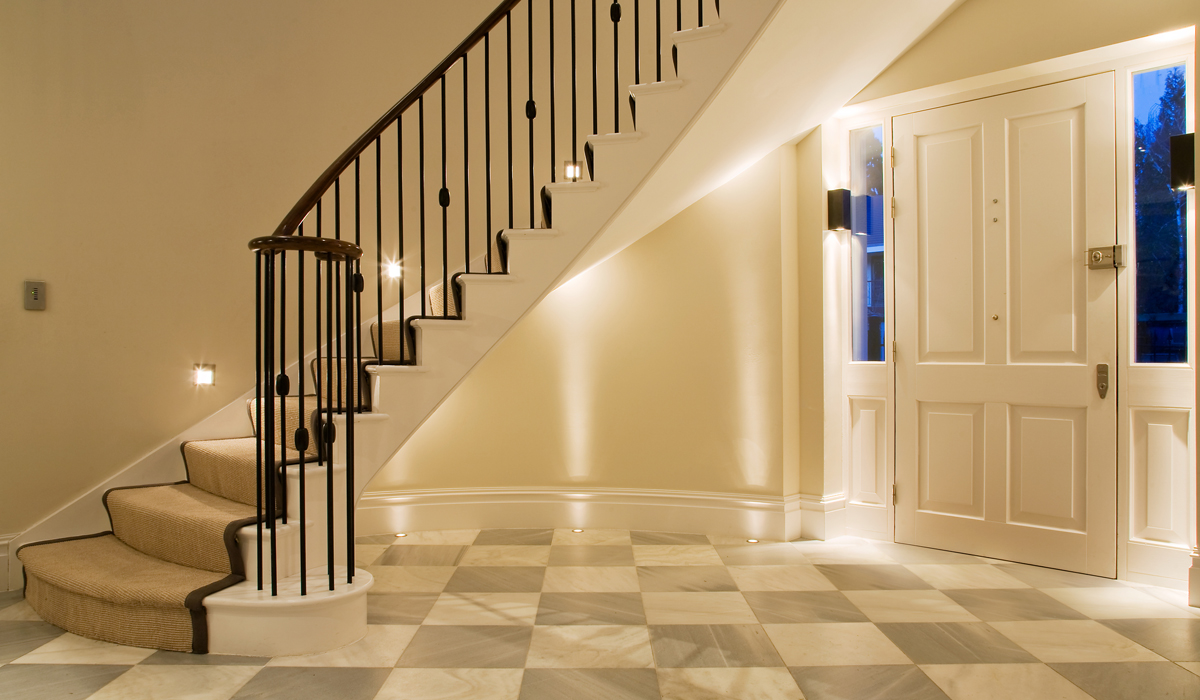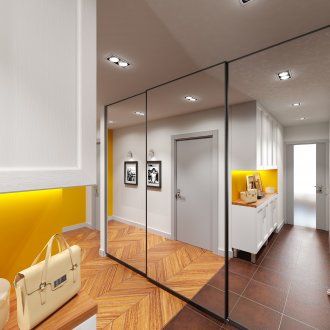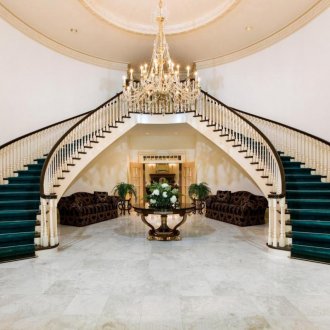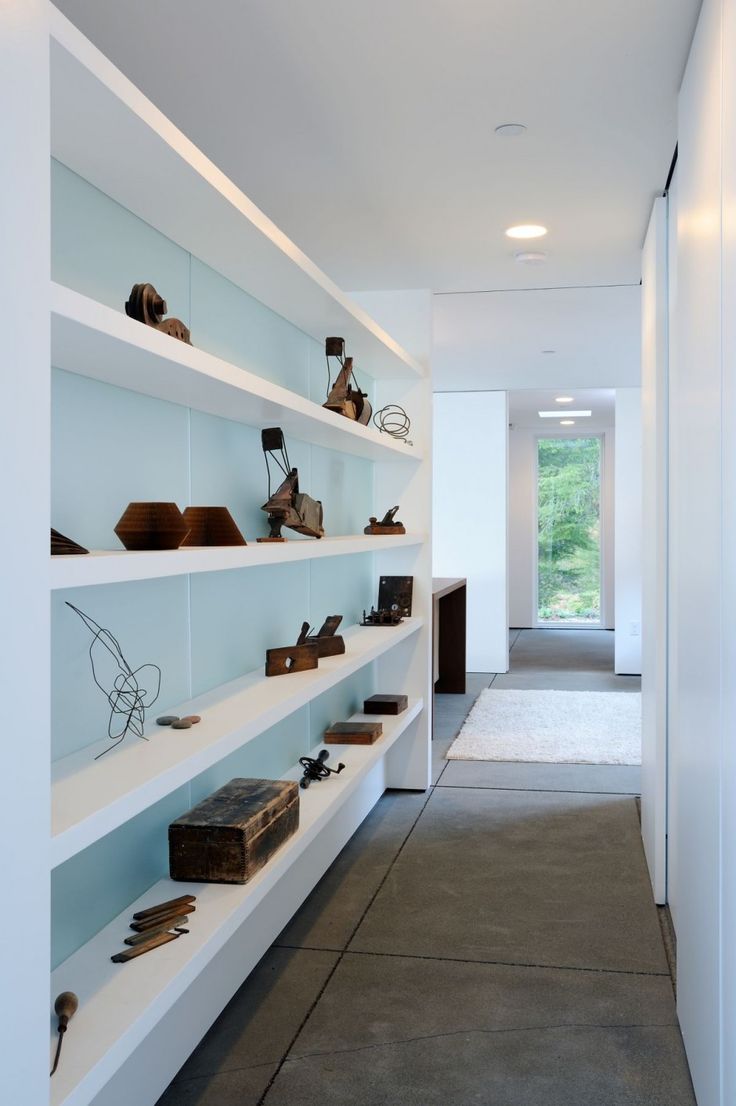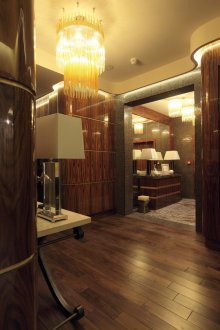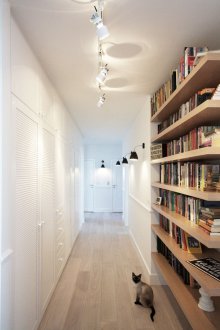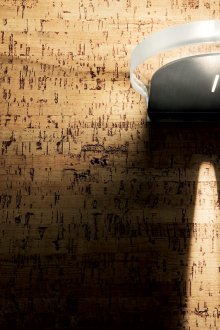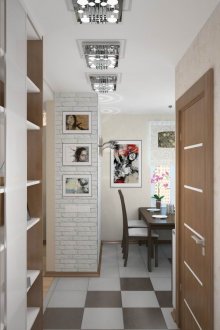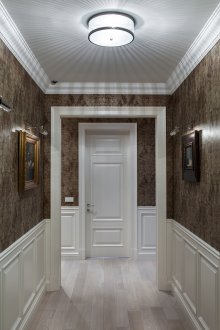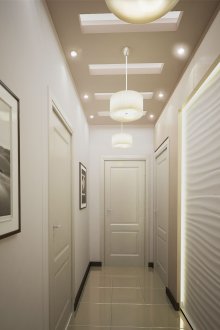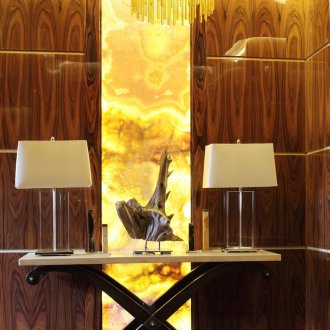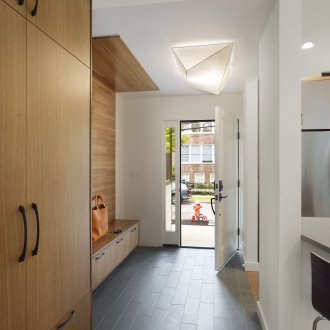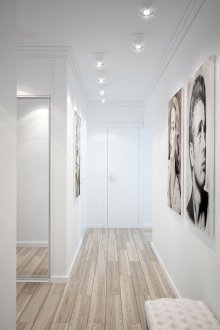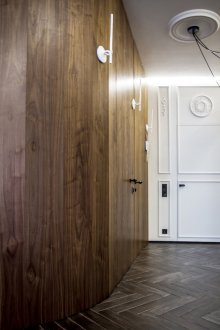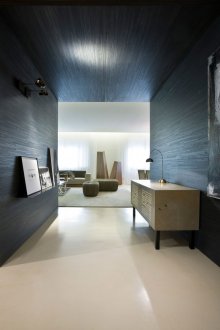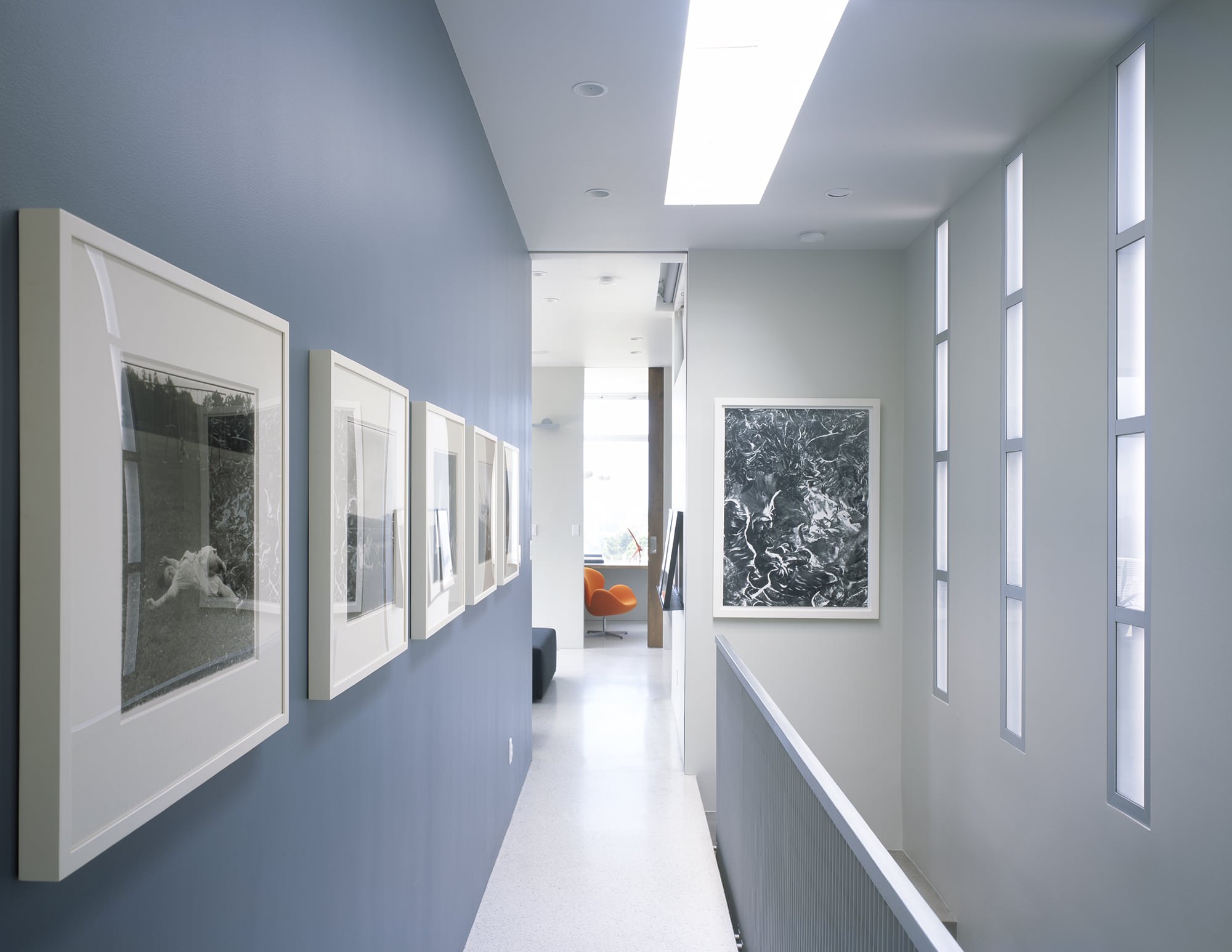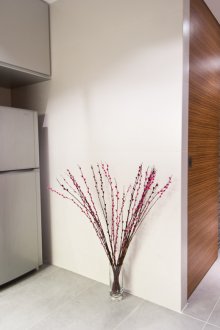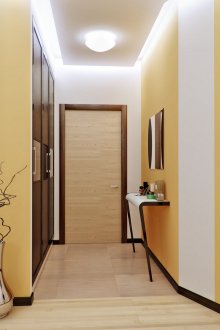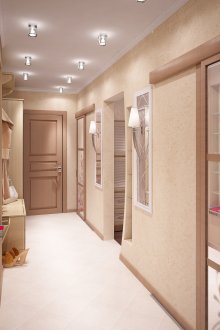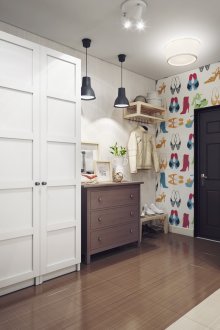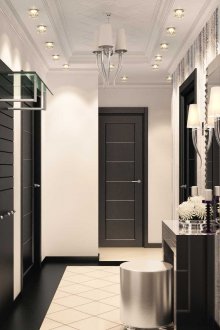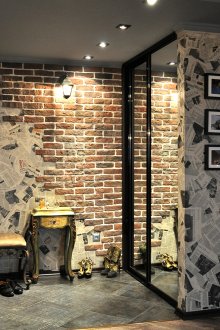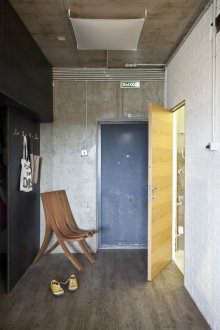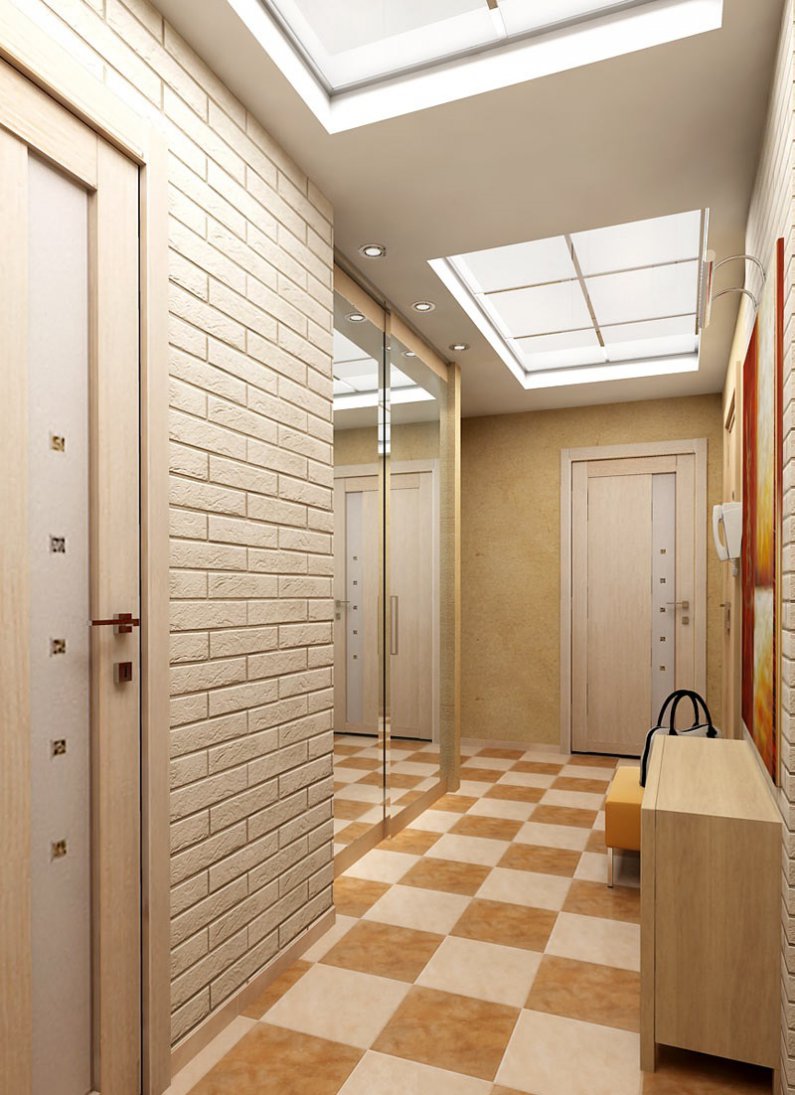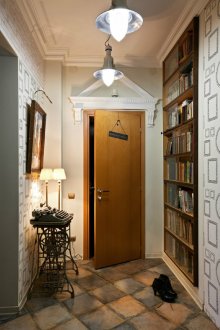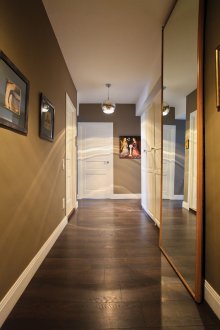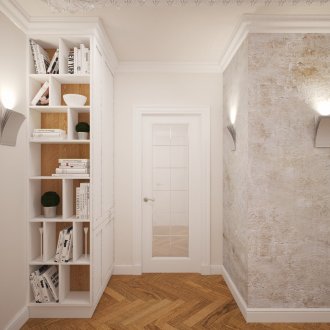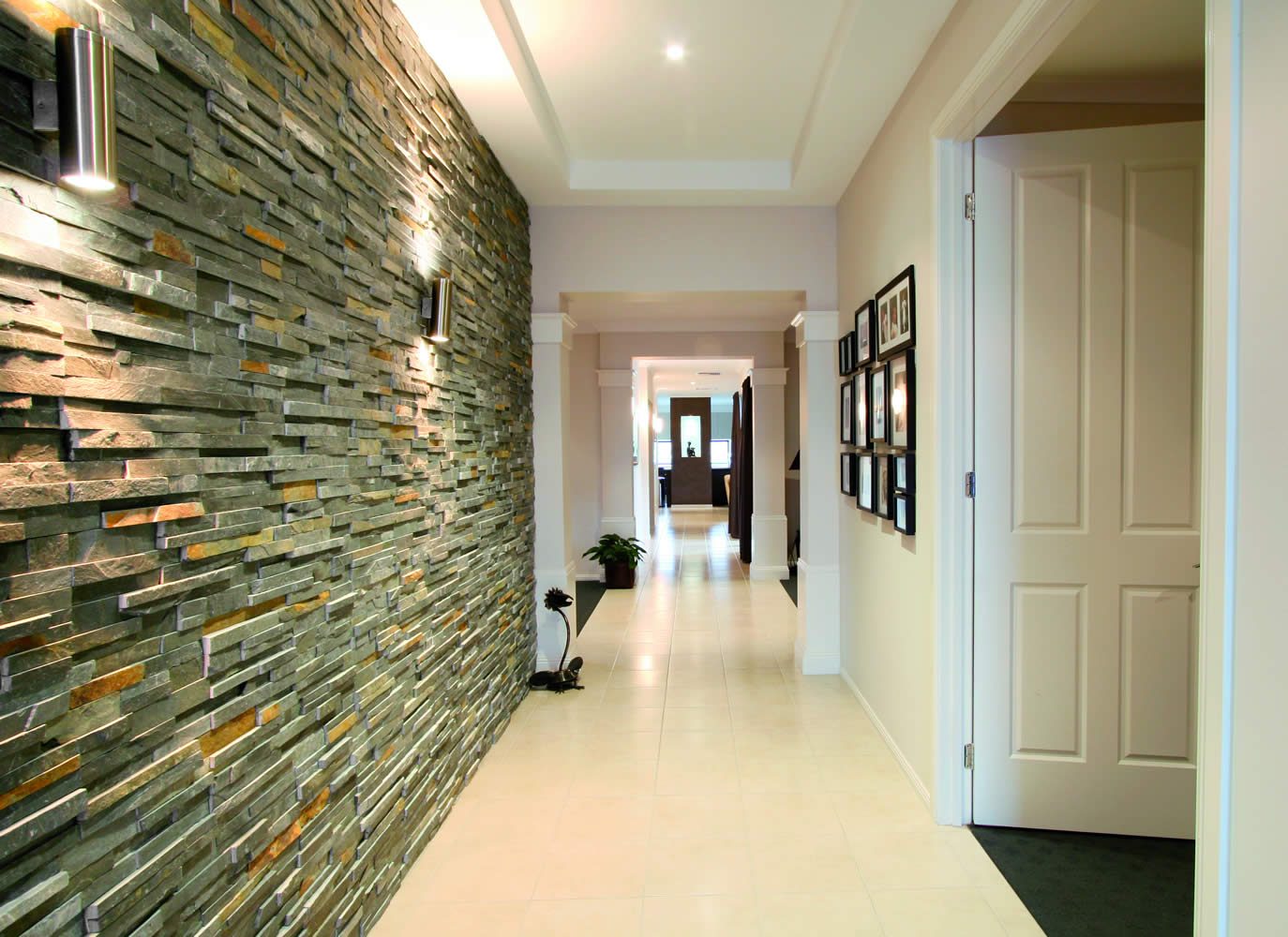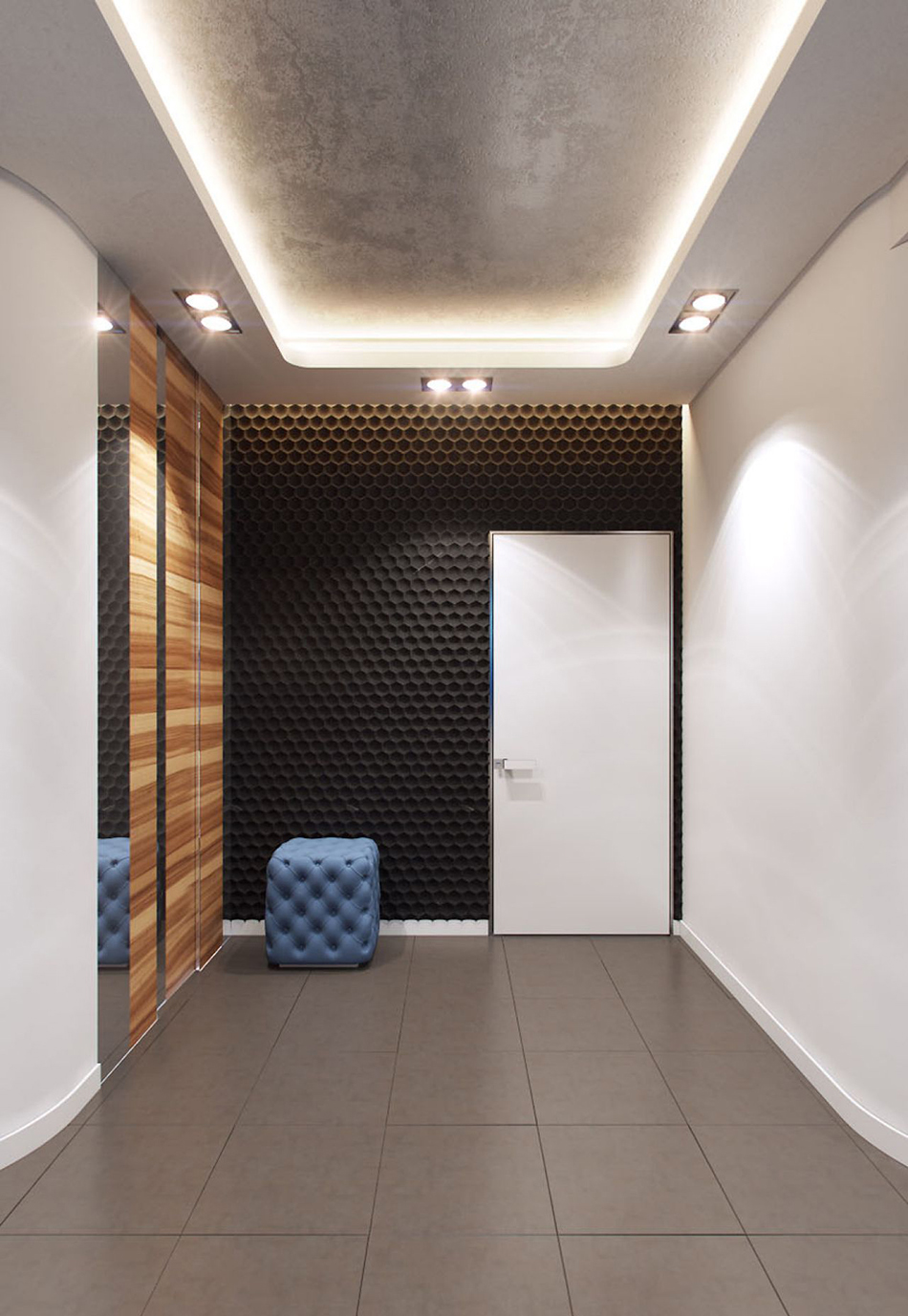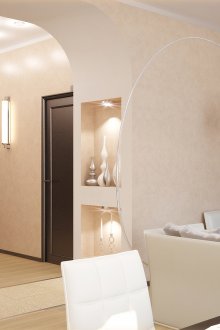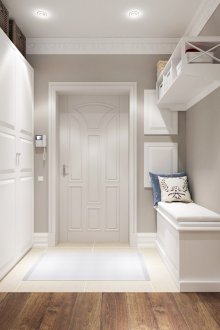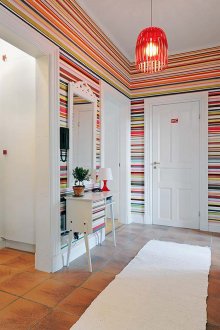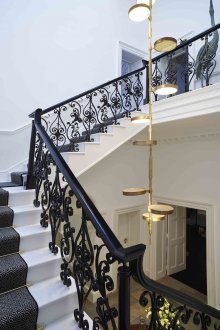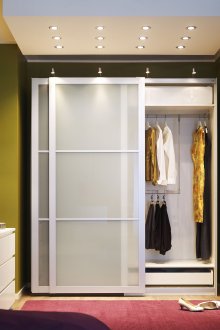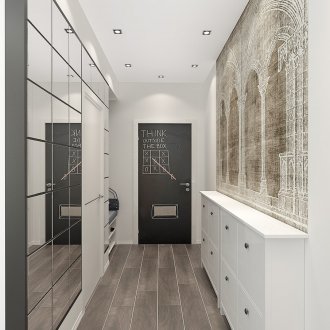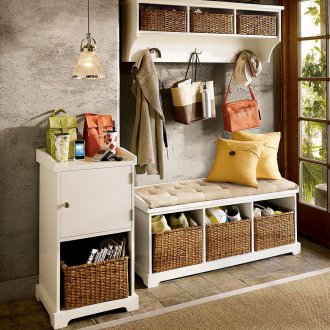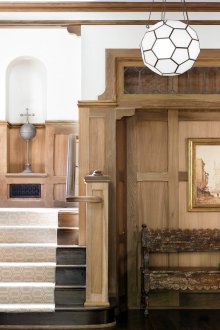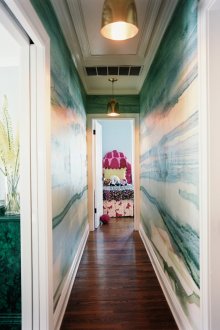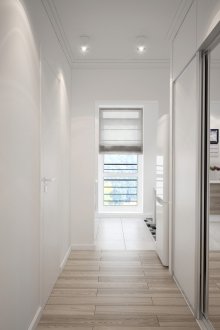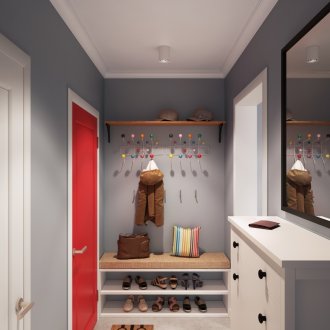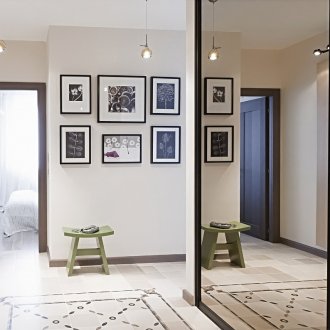Lighting in the hallway and corridor (50 photos): beautiful options
Not a single room can do without artificial lighting. Perhaps it alone does not receive enough natural sunlight. Then all the more without chandeliers, lamps and other things can not do. And, perhaps, the owners have some thoughts of their own about what qualities a room should have (we are talking about design), and it is most convenient to achieve the desired result if the scheme uses just the right artificial lighting, since the natural gives.
The entrance hall, the corridor is what people in the apartment primarily interact with. These rooms create a certain impression, set the mood to some extent, and may lead to some thoughts. And the scheme of their lighting is a powerful tool with which you can literally put the room in the right light, emphasize its interior and design. Therefore, we will talk about lighting in the hallway, its options.
Types of lighting in general
There is not one tool that allows you to be independent of the natural lighting in the house. The design of a particular room always requires a competent choice. Depending on the area on which they perform their task, allocate:
- General lighting. It makes sense to use it in not large enough rooms: for example, in a small hallway with a sufficient amount of natural light, you can completely dispense with not very powerful lamps. The goal is to illuminate the entire area of the room. This is achieved with the help of chandeliers, floor lamps, spots or hidden lighting. At the same time they are fastened high enough - under the ceilings.
- Local lighting. It is used to emphasize the interior in a particular place. Or because of the imperfection of the general lighting, for example, when the corridor is too large, and the chandelier throughout its length is not effective enough. So, in a long and narrow hallway, the desired result can be achieved thanks to floor lamps, sconces and spotlights (not below the ceilings, but below).
Some of the tools listed are in both categories. The thing is that modern manufacturers offer consumers a gigantic choice from a long list of models, rather than a narrow range of products. The options are very different, which allows some of them to be used for general lighting, and some for point lighting.
Some tips
When it comes to lighting in the hallway or corridor, you can immediately give a few universal recommendations. Such tips can favorably emphasize the design of even narrow rooms, for example, a narrow room. So, for example, the layout scheme of some apartments implies the need to visit a small entrance hall, a small corridor quite often. To get rid of the need to often use the switch, you should think about automation by installing lamps with motion sensors.
It is very important that the lighting throughout the apartment as a whole and the hallway in particular does not differ too much from each other. The choice made should suggest that the soft and pleasant light at the entrance will not be replaced by dim or, conversely, too bright and harsh eyes in the rest of the house.Likewise, options with a mismatch between the brightness of natural and artificial lighting can not lead to anything good.
Separately, you need to talk about mirrors. Firstly, the need in itself, because of which they are used, suggests that they should be well lit. Secondly, with the help of a competently located mirror, you can achieve the illusion of an increase in volume, a long room. Thirdly, the reflection of light can further emphasize the interior. Thus, mirrors are a tool that can, if necessary, have a significant impact on the design of a room. They can be successfully highlighted by the correct local lighting.
The problem of hallways and corridors is that it is often a narrow, long and small room. Not receiving in itself natural light in sufficient quantities, such a layout scheme and the selection of artificial makes you think. In a long and narrow hallway it makes sense to install a light source along the entire length under the ceilings. For example, using a line of several fixtures or one strip. A large selection of such options (and not only for a small room or narrow rooms) provides LED lighting.
Ceilings in some apartments may be too high. This feature of the room can be beaten if you install lamps with adjustable light direction. And then illuminate exclusively the walls, ignoring the ceiling. This little secret will allow you to achieve an interesting effect, emphasizing the interior. The main thing is that other lamps should not shine up.
Possible mistakes
The lighting scheme, the selection of specific types of light sources should always be carried out with an eye to the design of a particular room, its interior. And, of course, it is not difficult to make any mistake. For example, in a small room, do not think about leaving it, relying on natural light in the rest of the house, and leave this part of the room dark. Or ignoring the mirrors.
It may be a mistake to ignore the stairs. In most apartments, the layout scheme does not provide for it. However, owners of private homes whose interior contains such an element should know that under the stairs located in the hallway there should not be dark areas. Especially - if it contrasts with the proper level of illumination in the rest of the room. You can install some kind of lamp near the stairs, for example, above a mirror.
Finally, when it comes to lighting in the corridor, it will never be superfluous to combine different types of light sources. In narrow rooms, a narrow room, to emphasize its design and interior, you can always hang not only one traditional chandelier under the ceilings, but also supplement it with several lamps, floor lamps by the mirror or above the mirror, in the dark corner of a small narrow room, a long corridor.
